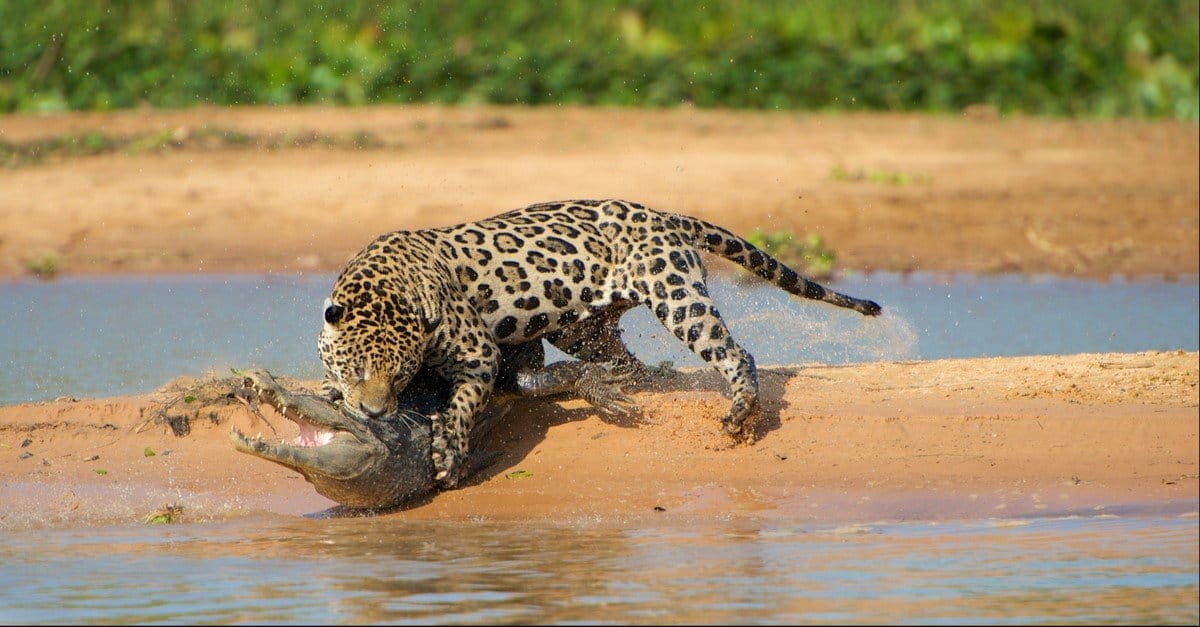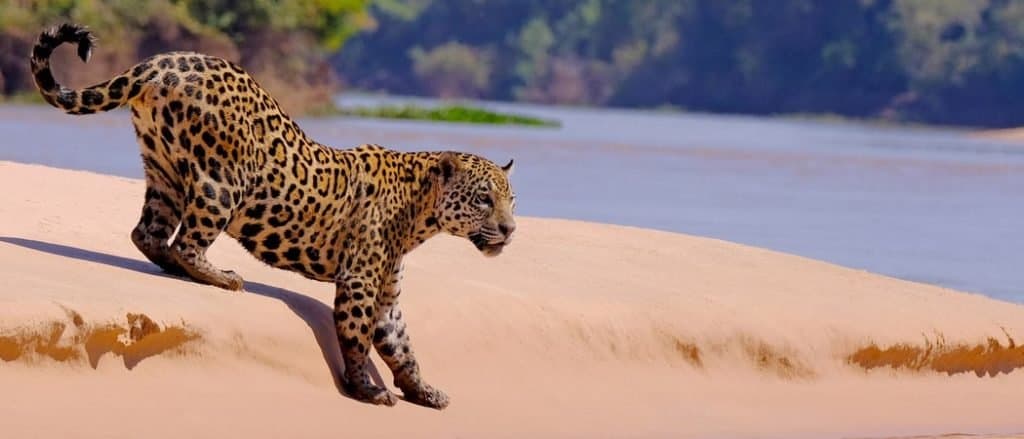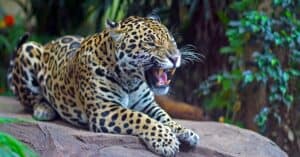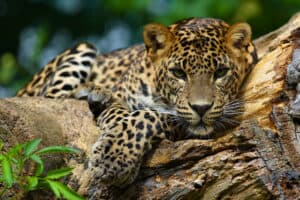Continue reading for our analysis...

We are used to seeing reptiles emerge from the water and grab animals on the shore. Crocodiles are masters of this and seem to appear out of nowhere! In the video clip, we get to see a terrestrial animal, namely a jaguar, observing a caiman in the water from the embankment of a pond. In a sudden bold and courageous move, the jaguar leaps from its perch, landing on top of the caiman in the water. The two wrestle in a blurry battle for dominance. The jaguar is able to grasp the caiman by the throat and pin it in place. The caiman has not given up, trying to wriggle free. While multiple 360°’s occur, the jaguar still manages to keep the caiman in its jaws. Finally, the jaguar is able to suffocate the caiman with a powerful throat lock. Once the caiman is motionless, the jaguar exits the pond with the large reptile in its strong jaws. It’s obvious that this jaguar will eat well!
Where Do Jaguars Normally Live?
Jaguars are robust members of the Felidae family with the scientific name Panthera onca. However, there are several subspecies. Their current full range covers the Southwestern U.S., stretching through Mexico and Central America, into northern South America. This means that they can be spotted in several countries including Argentina and Peru as well as the United States. They are the largest feline on the American continent.
The different subspecies tend to live in different geographical locations. For example, the Arizona Jaguar (P. onca arizonensis) is unsurprisingly found in Arizona as well as New Mexico. Similarly, the Peruvian jaguar (P. o. peruviana) is found in coastal Peru.
In terms of habitat, these guys like to live in areas with dense vegetation cover because they use it for stalking prey. So, you will find them in dense lowland and montane tropical forests. They like to live near water and so are often spotted along rivers and around swamps and lagoons. However, they can also be found in succulent and thorn scrub, temperate broadleaf forests, and even semi-desert scrub grasslands.

Jaguars are comfortable in and near water
©reisegraf.ch/Shutterstock.com
Are Jaguars Good Swimmers?
If you have a pet cat that hates water you may be surprised to see this big cat looking so comfortable in the river. Swimming is a big part of the jaguar’s lifestyle. They love to live near water and can often be spotted happily swimming from one forested area to another during seasonal flooding. They have adapted to swim confidently in lakes, rivers, and wetlands. However, they do not swim for very long distances.
It is common to see jaguars hunting near water. They use an ambush method of hunting as we see here. We also get to see another common behavior which is grasping the prey and dragging it to another location with suitable cover to eat it. Jaguars sometimes carry their prey over large distances!
Thank you for reading! Have some feedback for us? Contact the AZ Animals editorial team.






